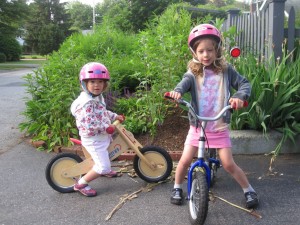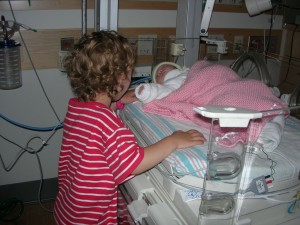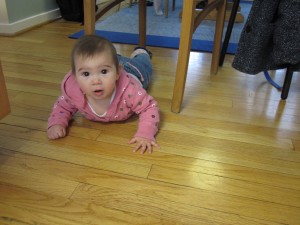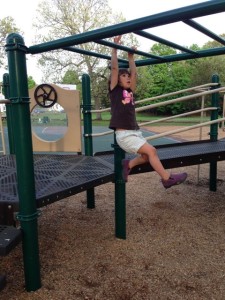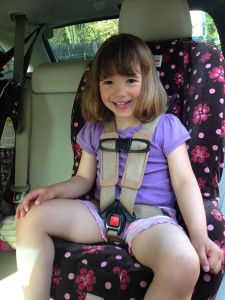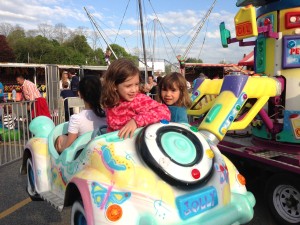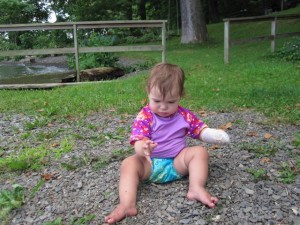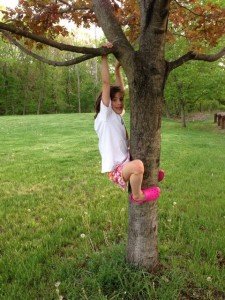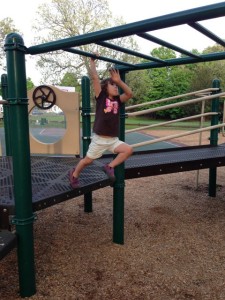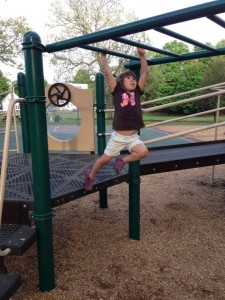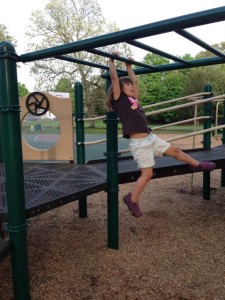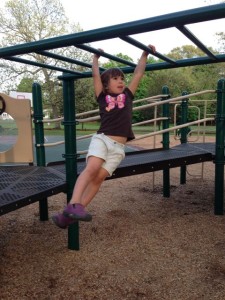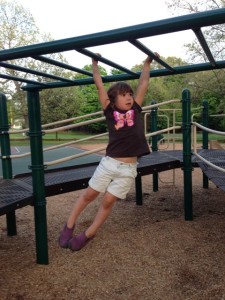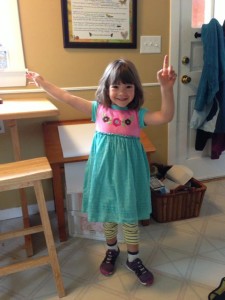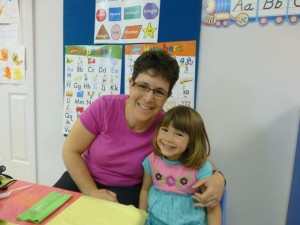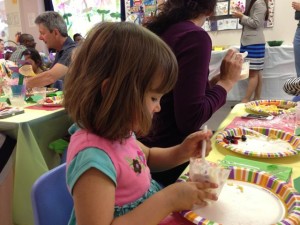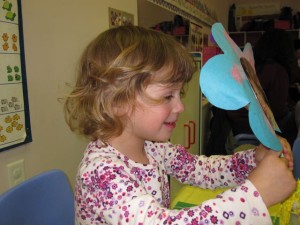This post on bicycling is part of my streak in the month of May to spread awareness about pediatric stroke. Please consider donating to support Children’s Hemiplegia and Stroke Association, an organization that has helped our family tremendously with support and information.
Both my girls started riding balance bikes (2 wheels, no pedals) when they were two years old.
In late March, Zoe asked me to go to the bike store to look at bikes. She’d been outgrowing her 16″ bike which she rides well. I had raised the seat but then the handlebars were too low. Of course, Mia also chimed in with, “I want a new bike too!” That wasn’t part of my original plan. She was on track to stay on the balance bike a while longer and then get Zoe’s 16″ hand-me-down.
For historical reference, Zoe could ride her Skuut balance bike the mile to their daycare before I got her the 16″ “pedal bike” which was in the spring after she turned 4. We skipped training wheels. The 16″ bike was a little too big. She could pedal right away and balance and steer but it took her a while to be able to start and stop with confidence and she went back and forth between the balance bike and the pedal bike for more than a year before things clicked on the pedal bike.
On that shopping day, I ended up getting Zoe a 20″ bike with hand brakes and gears. It seems like she is a really big kid all of a sudden. She can ride it well and independently. I even let her go up and down the street by herself. She’s good about going to the side of the road when a car is coming.
Mia fell in love with a little red 12″ pedal bike so I indulged her too. Mia could pedal, balance, and steer on day 1. She still needed help to get started over and over again, but she mastered her 12″ 2-wheeler faster than Zoe did the 16″ just because it’s more her size. Bicycling is an excellent skill and activity for Mia with her right-side challenges as it requires that she use her whole self in a balanced way. The grip on the handlebars and the pressure up through the arms is good for her. On her first day, she seemed to need to look at her feet to make sure they are on the pedals and some of that could be that she’s learning but some could be that she uses her eyes on the right foot particularly since her sensation is less developed there. I kept reminding her to look up at Zoe who was off in front most of the time.
Here’s Mia after just three weeks on her new pedal bike. She can pedal, steer, turn around to come back, and stop in a controlled way. You may notice that she does let go first with her right hand when stopping at the end of this video. Since that video, she has taught herself how to start on her own, all before turning 4 in June!
My lessons from this experiment in supporting two children in learning to ride bicycles:
- Balance bikes are awesome! Kids learn to balance and steer and go fast without also dealing with pedals.
- It’s possible and faster to skip training wheels.
- The right size bike makes learning much easier. I don’t mind that Mia will outgrow her 12″ bike after a season if she has used that season to master the skills.

